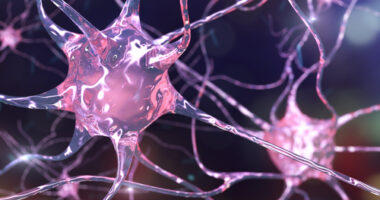HTT Mutations Affect Embryo Development as Early as 2 Weeks

Mutations in the HTT gene, which cause Huntington’s disease, lead to abnormalities in development as early as two weeks after conception, a new study indicates.
The study, “Huntingtin CAG expansion impairs germ layer patterning in synthetic human 2D gastruloids through polarity defects,” was published in Development.
Huntington’s is caused by a type of mutation in the HTT gene called a CAG trinucleotide repeat expansion, which is when a particular sequence is repeated over and over. While all cells in the body express the HTT gene, these mutations seem to cause problems primarily with certain nerve cells, and the reasons for this are not clearly understood.
While Huntington’s symptoms generally don’t become apparent until adulthood, emerging research suggests that HTT mutations can cause biological and physiological abnormalities long before the disease begins to show in earnest. Prior research has suggested that Huntington’s affects the brain before birth, but exactly when defects first appear has been unclear.
“When the patient goes to the doctor, that’s when the last dominoes have fallen,” Ali Brivanlou, PhD, professor at the Rockefeller University in New York and co-author of the study, said in a press release. “But the first domino is pushed in the developmental phase. Knowing this trajectory, we may be able to block the progression of the disease.”
Brivanlou and his colleagues conducted a series of experiments using a model of the human embryo derived from stem cells, with or without HTT mutations.
Specifically, the team focused on how HTT mutations affected gastrulation, an early stage of embryonic development. For the first two weeks or so of development, an embryo is basically a two-dimensional “disk” of cells. Then, during gastrulation, the cells grow and move to form three distinct layers, called germ layers: the endoderm (inner layer), mesoderm (middle layer), and ectoderm (outer layer). Over the course of development, these germ layers give rise to different types of body tissue.
Results showed that HTT-mutant embryos were able to form all three layers. However, these mutants were associated with a significantly smaller size of the ectoderm, which is the layer that gives rise to the brain and central nervous system, as well as the skin.
The difference was so pronounced that “you can see it with your eyes,” Brivanlou said.
More CAG repeats in the HTT gene (i.e., more severe mutations) led to a greater decrease in ectoderm size.
“Our study provides, for the first time, evidence that HTT-CAG expansion could also affect gastrulation in humans,” the researchers wrote.
Further experiments suggested that mutant HTT exerts these effects by causing abnormalities in a molecular pathway called the SMAD2/3 pathway, which interferes with how cells differentiate (grow into specific cell types) during early development.
“We have identified that germ layer specification defects mediated by HTT-CAG expansion are due to a positive modulation of SMAD2/3 signaling,” the researchers wrote.
“Understanding those mechanisms,” Brivanlou said, “may be the key to developing new treatments that delay the symptoms, or even cure the disease.”








